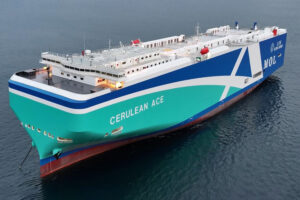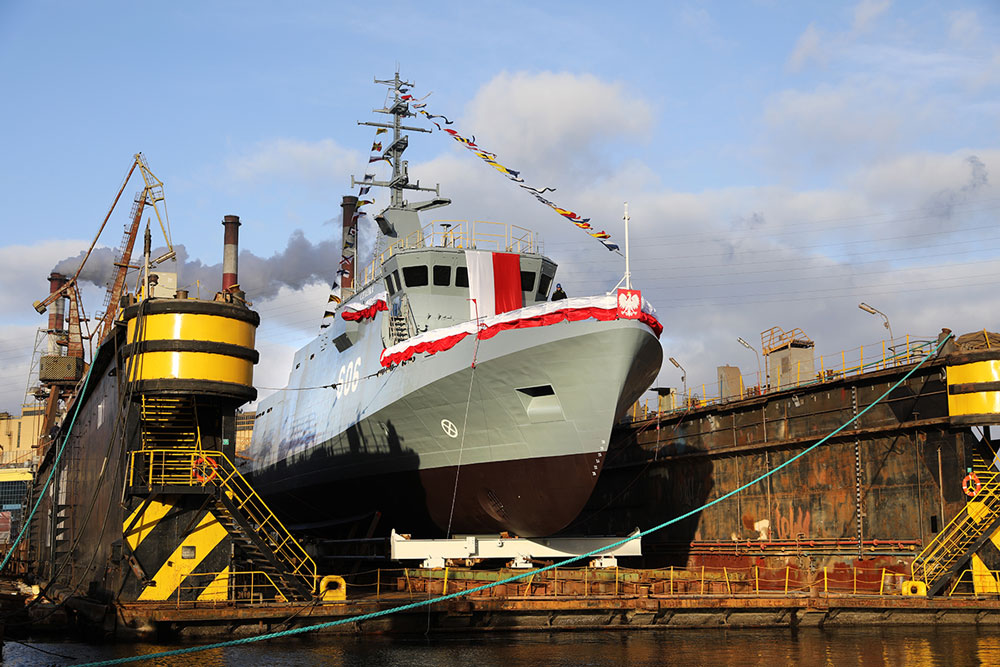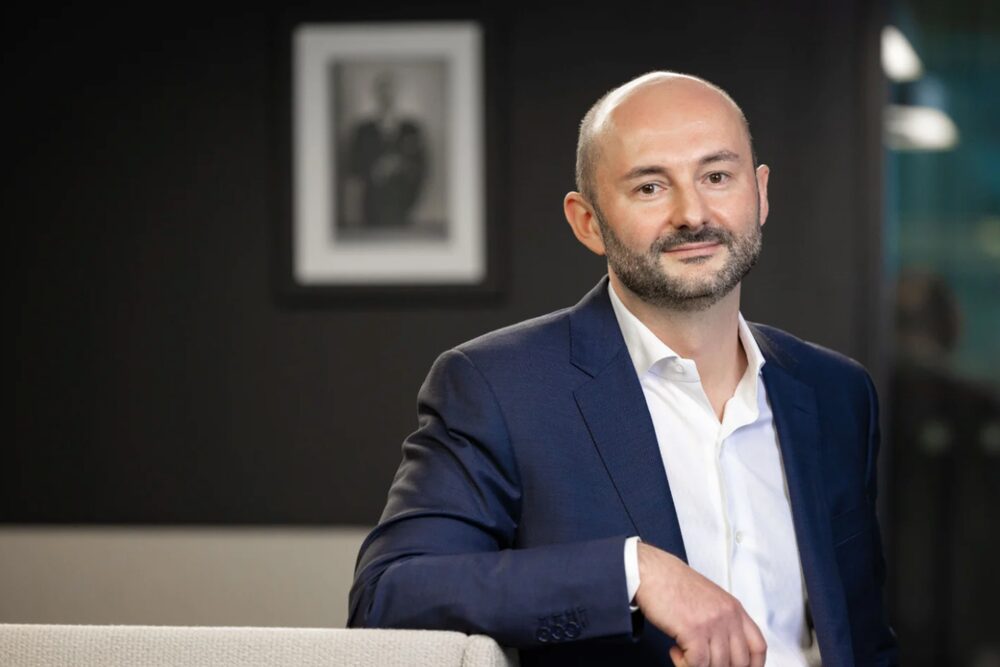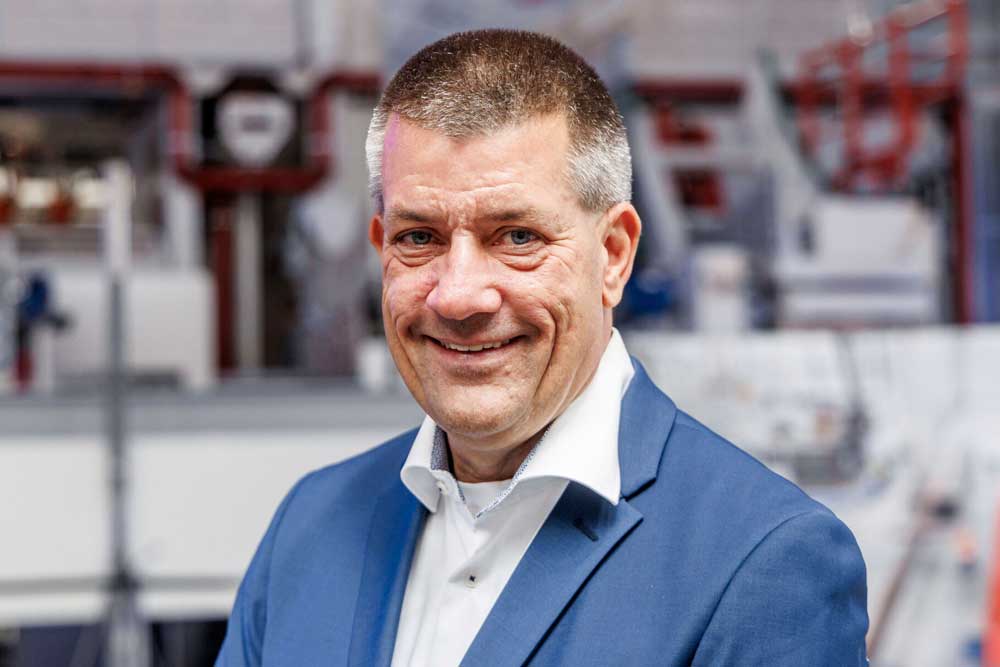The Japanese shipping group Mitsui O.S.K. Lines (MOL) has taken delivery of the first car carrier, “Cerulean Ace”, of a new series. The ship marks a historic milestone for the shipping company and the shipyard.
The LNG-powered car carrier “Cerulean Ace” was delivered at the Onishi site of the Shin Kurushima Dockyard[ds_preview].

The vessel, which has a capacity of 7,050 CEU, is intended for transporting Mazda Motor Corporation cars, among other things.
For MOL, it is the first newbuild in a series of eleven vessels being built in Japan as part of the “Blue Series”. “Cerulean Ace” translates as “blue sky” or “sky blue”. A total of 14 newbuilds with LNG propulsion have been ordered. The MOL Group, which also operates container ships, bulkers and tankers, is planning to put 90 ships powered by LNG or methanol into service by 2030 in order to achieve its own environmental targets. 33 LNG-powered ships are currently in the fleet.
“Cerulean Ace” is the shipyard’s 100th MOL newbuild
The Shin Kurushima shipyard has always been an important partner for the shipping company. According to MOL, the “Cerulean Ace” is the 100th ship ordered from the shipyard.
The technical innovations and specific features of the 199 m long ship include a slanted bow – the aerodynamic design is intended to reduce wind resistance by 20%, a widening from 32 to 38 m, which increases the capacity from 6,400 to 7,000 CEU, and an artificial intelligence system installed in the cargo hold, which is intended to detect fires early and inform the crew quickly.
The car carrier industry has been experiencing a real boom in demand for some time now. Many shipping companies have ordered newbuildings in recent weeks and months. Wallenius Wilhelmsen, one of the largest market players, is also focusing on new ships. The current order book is “nowhere near” sufficient, manager Carsten Wendt recently told HANSA PODCAST exclusively. Listen to the entire episode here. Wendt discusses new construction projects, the question of the propulsion system of the future, growing competition from China and potential market consolidation.















